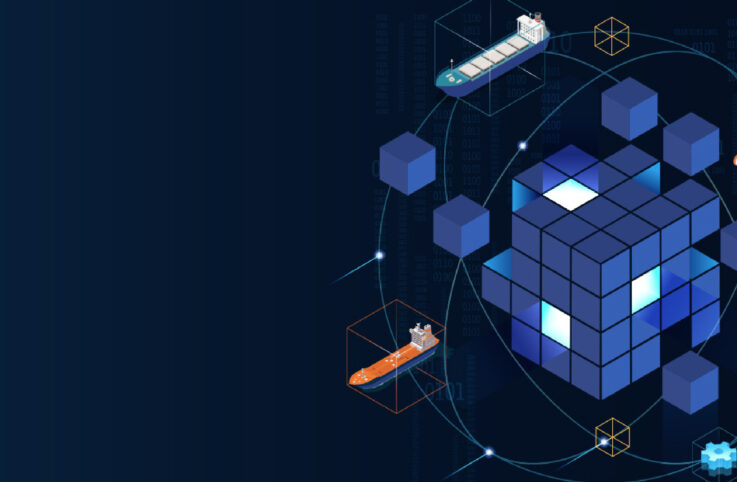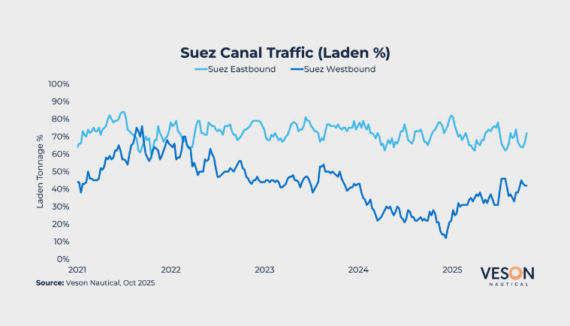Data is key to solving today’s maritime shipping challenges, helping to answering difficult questions about your business and the broader market.
But the maritime shipping ecosystem has its fair share of data obstacles, including too much data in some areas, too little data in others, and pervasive issues with latency, integrity, standardization, and availability. Transforming data from the problem into the solution requires all forms of data to be presented in context—in the times, places, and formats needed to make a real impact on decisions.
In a recent webinar, Solving with Data, Veson Nautical Product Manager Bill McConnell and Director of Product Management Niclas Daehli Priess showcased important ways to leverage internal and external data sources to solve maritime shipping challenges. In this blog post, we’ll recap the discussion by summarizing key data challenges in the industry today, how Veson clients source high-integrity data, and how data can become tangible solutions for maritime shipping’s top challenges.
Data is the problem, and data is the solution
There are 100 million plus data points generated by the maritime shipping industry each day. With so much data accumulating, often in an irregular and unstandardized way, it’s no surprise that maritime shipping is facing a data dilemma. However, 90% of maritime stakeholders say that real-time data access and information sharing are important for increasing efficiency.
While data overload or confusion is a problem, high integrity, standardized data is the solution to that problem. Here are just a few challenging areas where we’ve seen our clients leverage data to help understand their business and enhance decision making:
- Regulatory complexity driven by the impact of evolving requirements
- Analysis of internal KPIs and business metrics
- Pre-fixture decision making
- Monitoring a dynamically changing market
Building the foundation for data-driven decision making
Let’s take a look at a few core maritime shipping data sources and how our offerings are helping clients solve challenges in these areas by making the most of their data.
Internal Data
The problem: The maritime shipping business generates a massive amount of internal data. As the volume and velocity of this data increases, so too does the magnitude of data pain points related to standardization, structure, and scalability.
The solution: VIP Data Lake provides an organized schema that can be used to ensure the utility of workflow data and mine meaningful insight within our client’s business. When data served from the VIP Data Lake is combined with the powerful data provided by Oceanbolt, clients can gain deeper insight into their internally generated data alongside market insight.
Market Data
The problem: Implementing an AIS ingestion process is no small undertaking, and the journey itself limits the time that can be spent deriving meaningful insight. And yet, the importance of high-integrity market insight has never been greater.
The solution: Oceanbolt combines a best-in-class AIS shipping data engine with comprehensive freight analytics to deliver the insight our clients need to make the best possible decisions.
Examples of applying data in context
Finally, let’s explore some examples of how we at Veson bring data into the context of our clients’ workflows for greater efficiency.
Consumption trends: By integrating historical consumption data into PowerBI and augmenting that data with stoppage and wait times from Oceanbolt, stakeholders can understand the context behind consumption trends.
Tracking overtime: With high-integrity data from VIP Data Lake, stakeholders can identify to which counterparties they are paying overtime to better understand the business that they are doing with counterparties.
Port congestion insights: With the Oceanbolt API, VIP users can gain a lens into port congestion at various stages of the workflow — including during pre-fixture planning and ongoing voyage operations.
Forecasting: Predicting arrivals can provide valuable learnings about tonnage and cargo availability in the market at large. Oceanbolt logs have been trained by VIP data, enhancing the reliability of this information.
Importing vessel data: Using Oceanbolt Vessel Particulars Import Interface, users can simply import vessel data within chartering workflows to drive downstream workflow.
We at Veson Nautical are dedicated to supporting our client community to rise to the challenges presented by data and transform them into contextual insights that enhance decision-making and therefore competitive advantage. For more on this topic, we welcome you to download the Solving with Data webinar on-demand recording.
To see any of the solutions mentioned here for yourself, request a demo of the Veson IMOS Platform and/or access an interactive demo of Oceanbolt.




